Upon entering the ship, archaeologists unexpectedly discovered a sea monster.
While diving in the waters near Stora Ekön Island in search of artifacts from the ship Gribshunden, Professor Johan Ronnby and his colleagues from the Blekinge Museum (Sweden) encountered an unexpected phenomenon. They heard sounds resembling a dog growling emanating from inside the ship.
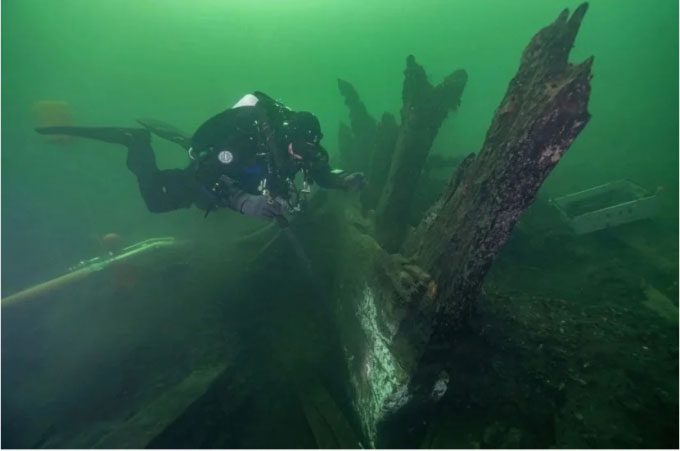
While diving to search for artifacts on the Gribshunden ship, archaeologists heard sounds resembling a dog growling from within. (Image: Live Science).
Upon exploring the interior, they were startled to discover a “sea monster” with a bizarre shape hiding inside the ship’s hull. After thorough examination, they found that this “sea monster” bore a striking resemblance to a dog, and the sounds they had heard were coming from it. Consequently, they decided to salvage the ship for further investigation.
Gribshunden is a royal ship that has rested under the Baltic Sea for 500 years. The Gribshunden belonged to King John of Denmark and is believed to have sunk in 1495 after catching fire during its journey from Copenhagen to Kalmar (on the eastern coast of Sweden).
This “sea monster” is made of wood. It was used as a scarecrow to ward off evil spirits, with the growling noise possibly resulting from its design. Scientists note that this “sea monster” did not exist in any medieval European culture and resembles artifacts from an ancient temple in the Amazon rainforest.
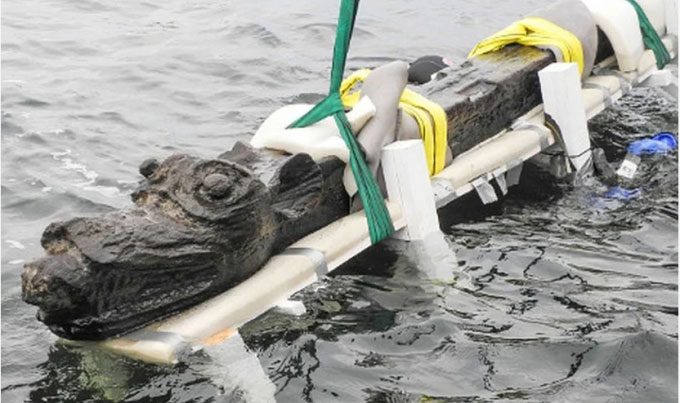
Image of the “sea monster” after being salvaged. (Image: Live Science).
According to archaeologists, this “sea monster” is called Gribshunden. Gribshunden literally means “Griffin-Hound” but may also refer to a specific breed of dog. In a letter from King John written in 1486, this name was mentioned. The king wrote, “In navi nostra Griffone” (Barfod 1990: 81). This phrase translates to “In… Griffone,” where the term “Griffone” linguistically can be seen as a variation of “gryps” or “gryphus” (griffin) (A. Ijäs 2015, pers. comm., June 27). This explains the presence of the “sea monster” on the ship.
In addition to the wooden sea monster, many pieces of armor, weapons, and other medieval artifacts were found on board.
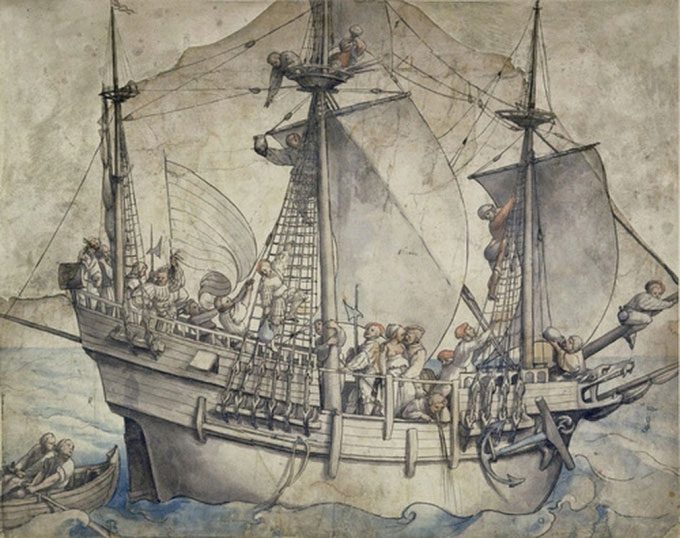
A historical depiction of the ship. (Image: Live Science).
It is known that the wreck of the Gribshunden was rediscovered by divers in the 1960s and 1970s. The remains of Gribshunden lie at a depth of 10 meters off the coast of Stora Ekön. This site is complex, with much of the wreck still buried in sediment. From 2000 to 2012, marine archaeologists recovered several artifacts during excavation. After a few years of interruption, a new research initiative was launched in 2019, with explorations continuing in 2020 and 2021.
Before the ship was salvaged, archaeologists Mikael Larsson and Brendan Foley from Lund University discovered over 3,000 new artifacts in containers on the ship that previous exploration teams had overlooked.
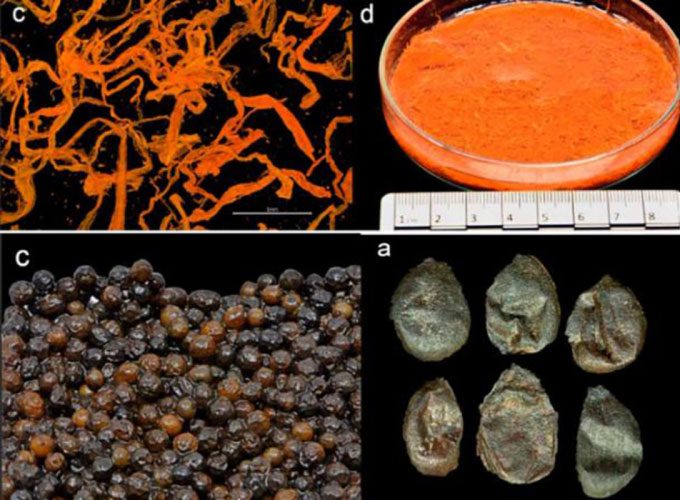
Spices and fruits found on the ship. (Image: Live Science).
These artifacts include various spices such as ginger, saffron, pepper, mustard, cloves, dill, and nutmeg. Additionally, the research team found several types of fruits including black raspberries, red raspberries, grapes, and dried flax seeds used as snacks.
These well-preserved spices and fruits benefited from the microenvironment created by the ship after it sank. When the Gribshunden sank, it brought with it drifting seaweed, resulting in a thick seasonal deposit of algae. As the algae decomposed, it created locally low-oxygen areas, contributing to the excellent preservation of the plant materials.
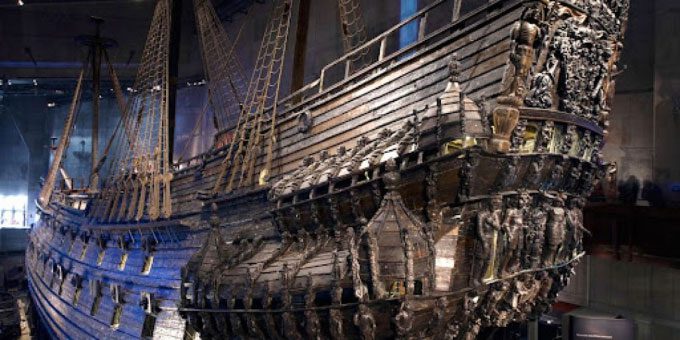
The salvaged ship remains largely intact. (Image: Live Science).
Archaeologists believe that Gribshunden is truly a treasure as no other ship from the same period has been discovered before. It could provide them with invaluable insights into the glory days and the mysteries of maritime exploration during the eras of Columbus and Vasco da Gama.


















































